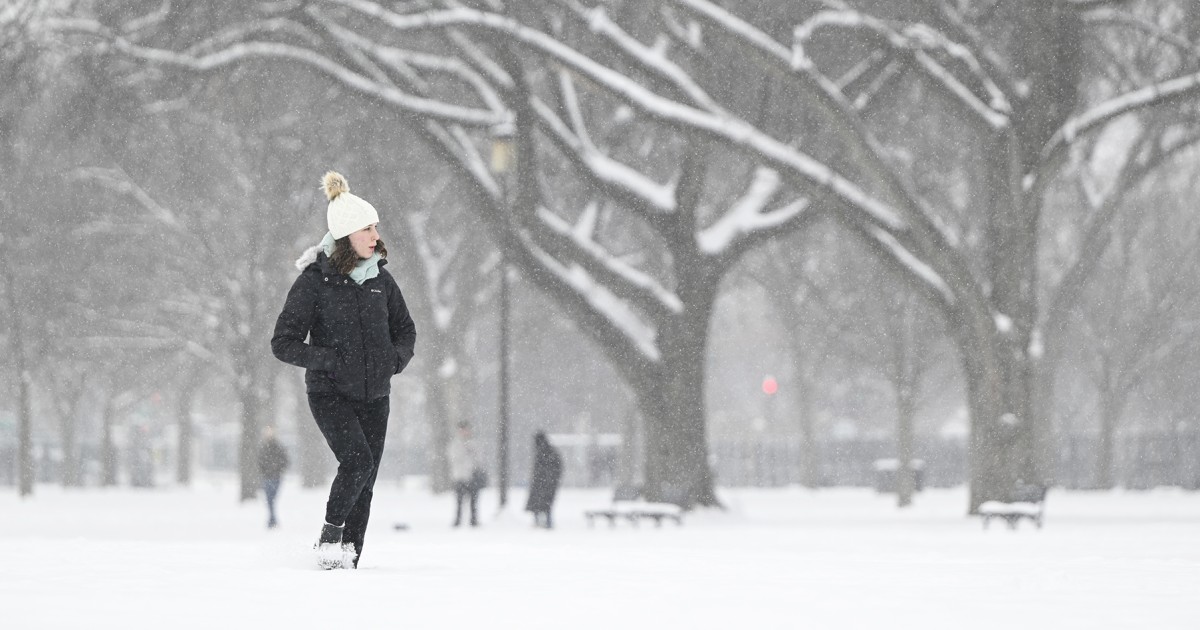Winter’s Grip: Understanding the Impact of Severe Cold Weather Alerts
As a powerful snowstorm approaches, approximately 135 million Americans find themselves under severe cold weather alerts, particularly in the Northeast and mid-Atlantic regions. Authorities are urging residents to prepare for hazardous conditions and potential disruptions. The implications of this winter storm go beyond mere snowfall; they encompass public safety, infrastructure challenges, and the emotional toll on communities. This article delves into the multiple facets of this impending weather event, offering insights on preparation, safety measures, and the broader consequences of winter’s grip.
What to Expect from the Snowstorm
This winter storm is forecasted to bring significant snowfall, high winds, and dangerously low temperatures. Meteorologists predict that some areas could receive up to two feet of snow, creating treacherous conditions for travel and daily activities. The National Weather Service (NWS) has issued warnings and watches, highlighting areas most likely to be affected.
- Snow Accumulation: Areas in the northeast can expect between 12 to 24 inches of snow.
- Wind Speeds: Gusts could reach up to 50 mph, creating blizzard-like conditions.
- Low Temperatures: Wind chill factors are expected to drop temperatures below zero in many regions.
Preparing for Winter’s Grip
Preparation is crucial when facing severe cold weather alerts. Local and state authorities recommend several steps to help residents stay safe and minimize disruptions during the storm:
Emergency Supplies
Residents should gather emergency supplies, ensuring they have enough food, water, and medication to last at least three days. It’s wise to include:
- Non-perishable foods like canned goods, pasta, and rice.
- At least one gallon of water per person per day.
- Flashlights and extra batteries.
- First-aid kits and necessary prescription medications.
Home Safety Measures
Keeping your home safe and warm is essential during a severe winter storm. Here are some tips:
- Insulate windows and doors to prevent drafts.
- Keep your heating system well-maintained and check carbon monoxide detectors.
- Have a backup heating source, such as a fireplace or portable heater, ready to use safely.
Travel Precautions
In light of the impending storm, travel may become hazardous. If travel is necessary, consider these precautions:
- Monitor weather updates and road conditions before heading out.
- Keep your vehicle’s gas tank at least half full to avoid running out of fuel.
- Pack an emergency kit for your car, including blankets, snacks, and a shovel.
The Economic and Social Impact of Severe Cold Weather
Beyond immediate safety concerns, severe cold weather alerts can have far-reaching economic and social consequences. Businesses may face interruptions, leading to lost income and productivity. Schools often close, affecting families who rely on structured schedules and childcare. Additionally, the impact on transportation infrastructure can hinder the delivery of goods and services, exacerbating supply chain issues.
Community Response
Communities often band together during winter storms, showcasing resilience and solidarity. Local organizations may provide shelter for those without heat and coordinate food drives for those in need. Volunteer efforts can play a crucial role in ensuring that vulnerable populations, such as the elderly and homeless, receive the support they require. Collaboration among community members can significantly mitigate the storm’s impact.
Long-term Effects on Mental Health
Severe winter weather can also take a toll on mental health. The isolation caused by snow-covered roads and frigid temperatures can lead to feelings of loneliness and anxiety. It’s essential for individuals to remain connected with friends and family, utilizing technology to check in and offer support. Engaging in community activities, even virtually, can help alleviate these feelings and foster a sense of belonging.
Staying Informed During the Storm
As the snowstorm approaches, staying informed is paramount. Here’s how to ensure you have access to the latest information:
- Follow local news outlets for real-time updates on weather conditions and alerts.
- Utilize weather apps on your smartphone for immediate forecasts and alerts.
- Stay connected with emergency services and local authorities through social media.
Conclusion: Facing Winter’s Grip Together
With 135 million Americans bracing for the upcoming snowstorm, the importance of preparedness cannot be overstated. By taking the necessary precautions and staying informed, individuals and communities can navigate the challenges posed by winter’s grip. While the storm may disrupt daily life, it also offers an opportunity for solidarity and resilience as communities come together to support one another. Embracing a proactive mindset will not only enhance safety but also foster a sense of unity during these frigid times.
In the face of such severe cold weather alerts, remember that spring will eventually follow winter, and together, we can weather the storm.
See more Your Daily Weather



